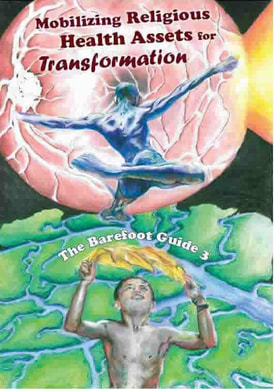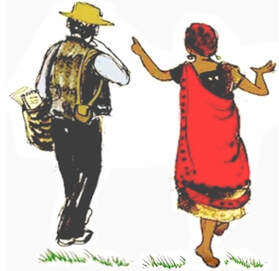The Barefoot Guide 3:
|
Subscribe to Barefoot Guide Updates
Download the Guide |
The Third Barefoot Writers Collective
Barefoot Guide 3
Primary authors:
James (Jim) R. Cochrane – University of Cape Town, South Africa
Gary R. Gunderson – Wake Forest University, North Carolina, USA
African/International Health Assets Programme members who have contributed to one or
other element of this Guide:
Mary Baich – Vesper Society (until 2012), USA
Teresa Cutts – Center of Excellence in Faith & Health, Methodist Healthcare, Memphis, USA
Steve de Gruchy – University of KwaZulu Natal, South Africa
Frank Dimmock – Lesotho, previously in Malawi
Paul Germond – University of the Witwatersrand (until 2010), South Africa
Mimi Kiser – Interfaith Health Program, Emory University, USA
Sinatra Matimelo – EngageHIV, Zambia
Deb McFarland – Rollins School of Public Health, Emory University, USA
Sepetla Molapo – University of Pretoria, Lesotho
Jill Olivier – University of Cape Town, South Africa
Barbara Schmid – University of Cape Town, South Africa
Fred Smith – Wake Forest Medical Center, North Carolina, USA
Liz Thomas – University of the Witwatersrand, South Africa
CDRA supportive contributions from:
Doug Reeler – Community Development Resource Association (CDRA), South Africa
Tony Saddington – Independent , South Africa
Editorial team: Jim Cochrane, Gary Gunderson, Teresa Cutts, Doug Reeler
Artist and Illustrator: Teboho Cochrane
Layout artist: Paula Wood (Paula Wood Design)
Barefoot Guide 3
Primary authors:
James (Jim) R. Cochrane – University of Cape Town, South Africa
Gary R. Gunderson – Wake Forest University, North Carolina, USA
African/International Health Assets Programme members who have contributed to one or
other element of this Guide:
Mary Baich – Vesper Society (until 2012), USA
Teresa Cutts – Center of Excellence in Faith & Health, Methodist Healthcare, Memphis, USA
Steve de Gruchy – University of KwaZulu Natal, South Africa
Frank Dimmock – Lesotho, previously in Malawi
Paul Germond – University of the Witwatersrand (until 2010), South Africa
Mimi Kiser – Interfaith Health Program, Emory University, USA
Sinatra Matimelo – EngageHIV, Zambia
Deb McFarland – Rollins School of Public Health, Emory University, USA
Sepetla Molapo – University of Pretoria, Lesotho
Jill Olivier – University of Cape Town, South Africa
Barbara Schmid – University of Cape Town, South Africa
Fred Smith – Wake Forest Medical Center, North Carolina, USA
Liz Thomas – University of the Witwatersrand, South Africa
CDRA supportive contributions from:
Doug Reeler – Community Development Resource Association (CDRA), South Africa
Tony Saddington – Independent , South Africa
Editorial team: Jim Cochrane, Gary Gunderson, Teresa Cutts, Doug Reeler
Artist and Illustrator: Teboho Cochrane
Layout artist: Paula Wood (Paula Wood Design)


